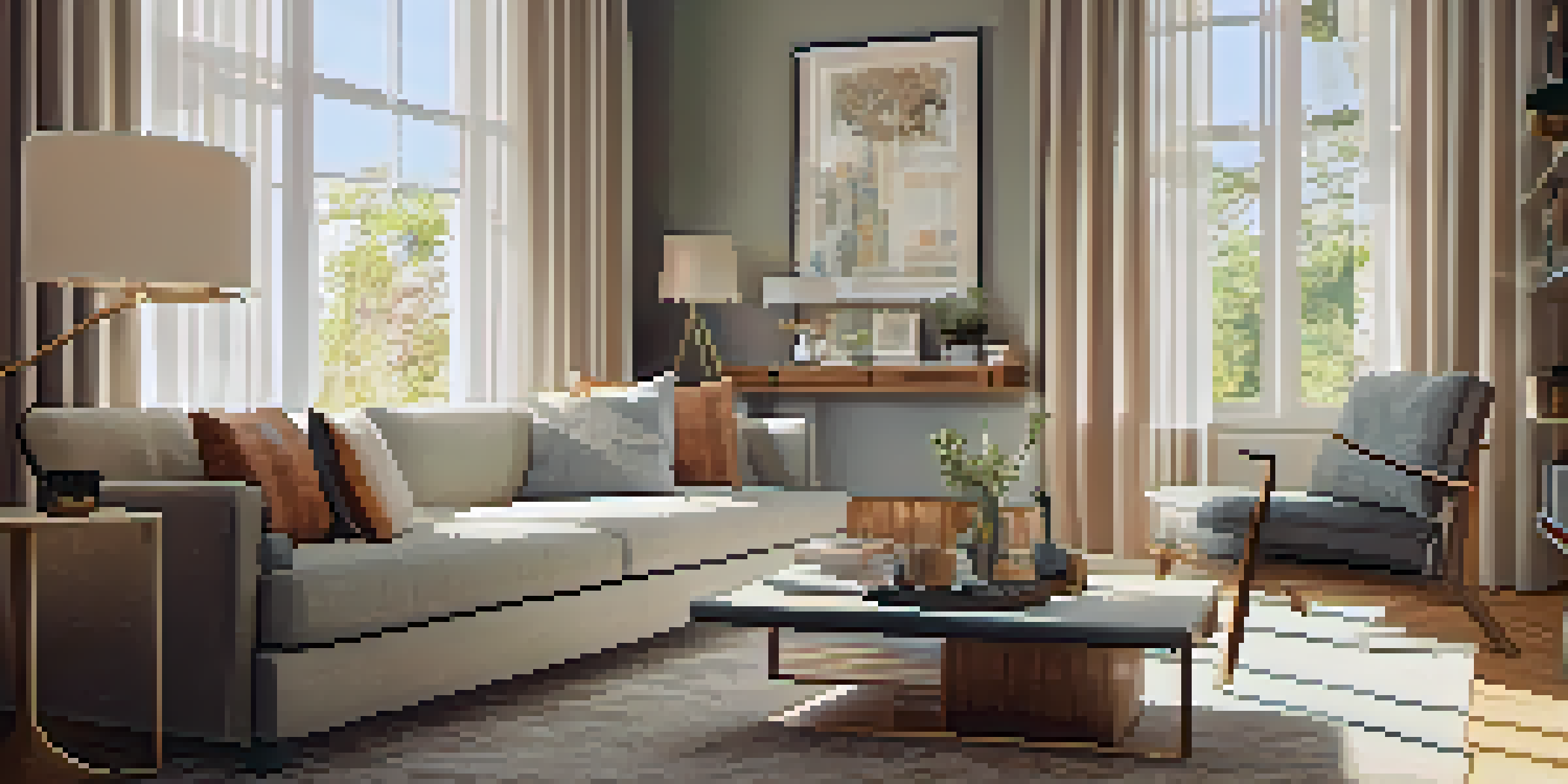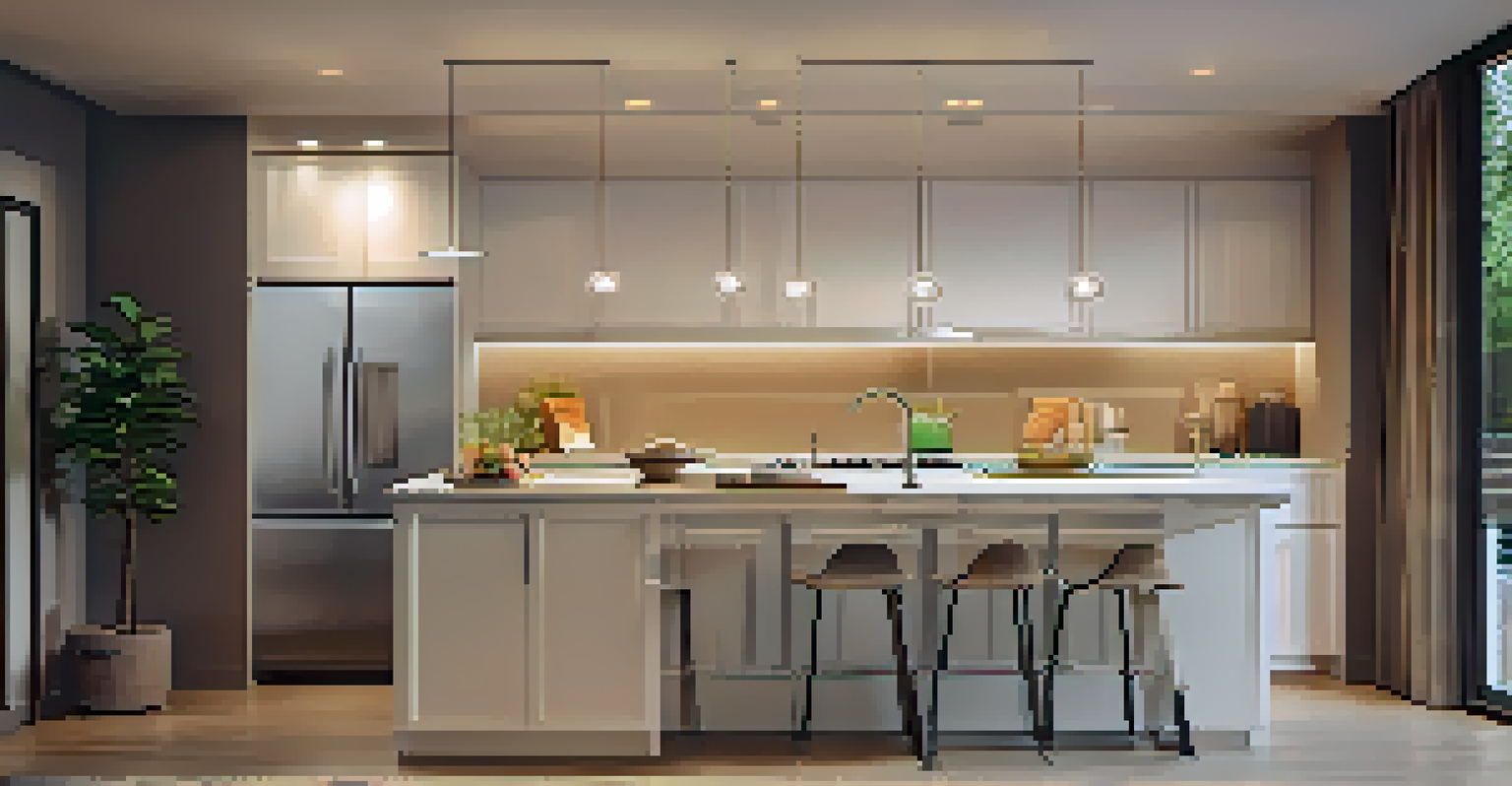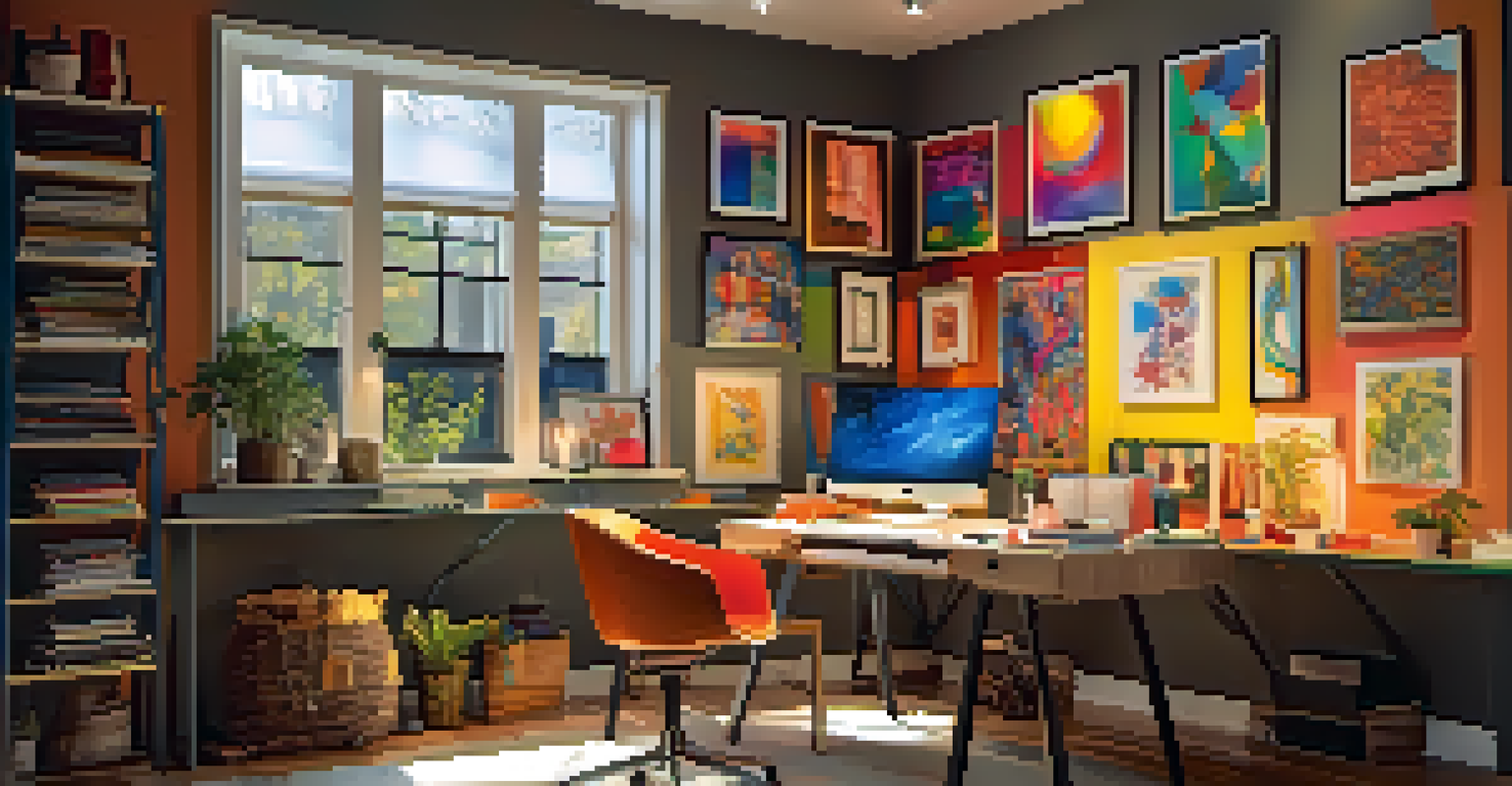Choosing the Best Lighting Solutions for Small Spaces

Understanding the Importance of Lighting in Small Spaces
When it comes to small spaces, lighting plays a crucial role in creating an inviting atmosphere. The right lighting can make a room feel larger, brighter, and more comfortable. Think of lighting as the magic wand that transforms a cramped area into a cozy haven.
Lighting is the foundation of great design.
Incorporating various lighting solutions can enhance functionality and aesthetics. For instance, a well-placed floor lamp can illuminate dark corners while adding visual interest. This is why understanding the importance of lighting is essential for optimizing your small space.
Ultimately, the goal is to balance natural and artificial light sources. By leveraging light effectively, you not only enhance the room's appeal but also improve your mood and productivity. So, let’s dive into the best lighting solutions for small areas!
Maximizing Natural Light in Your Small Space
Natural light is a game-changer when it comes to small spaces. It creates a sense of openness and can instantly uplift the atmosphere. To maximize natural light, consider using sheer curtains or blinds that allow sunlight to filter through while maintaining privacy.

Positioning mirrors strategically can also reflect light and make your space feel larger. For example, placing a large mirror opposite a window can double the amount of light bouncing around the room. This simple trick can dramatically change the perception of your space.
Importance of Lighting in Small Spaces
Lighting can transform a small room, making it feel larger and more inviting.
Another effective way to enhance natural light is to keep windows clean and unobstructed. Avoid heavy furniture or clutter near windows, as this can block precious sunlight. Embrace the beauty of natural light, and your small space will shine.
Choosing the Right Types of Light Fixtures
The type of light fixtures you choose can significantly impact the ambiance of a small room. Consider options like recessed lighting, wall sconces, and pendant lights that don’t take up valuable floor space. Each of these options can provide targeted illumination without overwhelming the area.
A small space doesn’t have to feel small, it just needs to be well-lit.
For instance, wall sconces can provide ambient lighting while adding a decorative touch. Similarly, pendant lights over a dining table can create a focal point that draws the eye upward, making the space feel taller. Choosing the right fixtures is all about functionality and aesthetics.
Don’t forget about the versatility of table lamps and floor lamps. These can be moved around easily to suit your needs and can add warmth to any corner. Selecting the right mix of fixtures can help you achieve a well-lit, inviting small space.
Layering Light for Depth and Dimension
Layering light is key to creating a dynamic and inviting atmosphere in small spaces. This involves using three types of lighting: ambient, task, and accent. By combining these layers, you can add depth and dimension to your rooms, making them feel more spacious.
Ambient lighting provides the overall illumination, while task lighting focuses on specific areas where you need more light, like reading nooks or workspaces. Accent lighting, on the other hand, highlights artwork or architectural features, adding character to your space.
Maximize Natural Light Benefits
Utilizing sheer curtains and mirrors can enhance natural light, creating a brighter atmosphere.
For example, consider a combination of ceiling lights for ambient lighting, a desk lamp for task lighting, and spotlights for accenting a gallery wall. This layered approach not only enhances functionality but also creates a visually appealing environment.
Using Color Temperature to Set the Mood
Color temperature refers to the warmth or coolness of a light source, measured in Kelvin (K). Warmer lights (around 2700K) create a cozy, inviting atmosphere, while cooler lights (above 5000K) offer a more energetic and focused vibe. In small spaces, choosing the right color temperature can set the mood you desire.
For instance, if you’re aiming for a relaxed environment in your living room, opt for warm white bulbs. Conversely, cooler light can be more suitable for kitchens or offices where you need to feel alert and productive. Understanding color temperature can greatly influence your comfort in a small area.
Mixing different color temperatures can also add interest. For example, using warm lights in living areas and cooler lights in workspaces can create a harmonious balance throughout your home. Pay attention to this detail to enhance the overall experience of your small space.
Incorporating Smart Lighting Solutions
Smart lighting is revolutionizing how we think about illumination in small spaces. With the ability to control brightness, color, and even schedules via smartphone apps, smart bulbs offer convenience and flexibility. This technology can be particularly beneficial in small rooms where lighting needs can vary throughout the day.
For example, you can set your smart lights to gradually brighten in the morning, simulating a natural sunrise, which can help you wake up more gently. Additionally, you can change the color of the lights to suit your mood or activity, whether it’s a warm glow for relaxation or bright white for productivity.
Choose Energy-Efficient Solutions
Opting for LED bulbs and dimmer switches can save energy and reduce electricity costs.
Integrating smart lighting can not only save space by eliminating clunky switches but also enhance your overall living experience. With features like voice control and remote access, smart lighting adds a modern touch to your small space.
Considering Energy Efficiency in Lighting Choices
When choosing lighting solutions for small spaces, energy efficiency should be a priority. LED bulbs, for instance, consume significantly less energy than traditional incandescent bulbs and have a longer lifespan. By making the switch to energy-efficient lighting, you can reduce your electricity bills while being kinder to the environment.
Additionally, consider installing dimmer switches to control the intensity of your lights. This not only saves energy but also allows you to adjust the mood of the room easily. For small spaces, where every watt counts, these small changes can have a big impact.

Ultimately, being mindful of energy efficiency not only benefits your wallet but also contributes to a sustainable lifestyle. By making informed lighting choices, you can enjoy a beautifully lit small space without the guilt of high energy consumption.